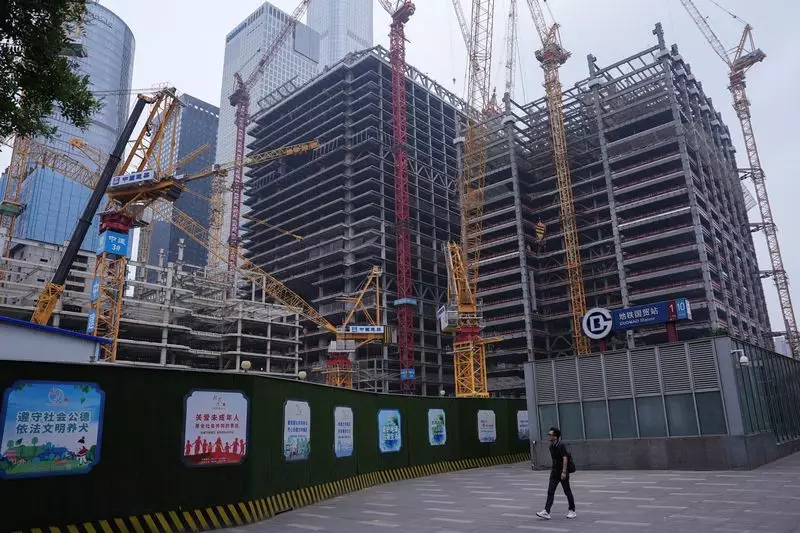As China grapples with a slowing economy, the government’s recent declaration to “significantly increase” its debt has stirred a whirlwind of opinions among investors and analysts alike. With multiple economic indicators suggesting a potential downturn, the Chinese leadership is under immense pressure to stimulate growth. However, despite announcements from Finance Minister Lan Foan regarding a suite of fiscal interventions, the absence of concrete numerical targets raises questions about the government’s commitment and the efficacy of these measures.
The Chinese government plans to support local governments in managing their debt burdens, introduce subsidies for low-income citizens, and bolster the property sector. These initiatives are critical as the property market in China faces significant headwinds, and consumer confidence wanes amidst deflationary pressures. The aim is to provide a cushion for those financially distressed and signal to the broader market that the state is taking proactive steps to foster a more resilient economy. However, Lan’s announcement did not specify the size or scale of the fiscal stimulus, leaving investors uneasy and yearning for clearer guidelines.
Days following the press conference, analysts like Vasu Menon have expressed a mix of optimism and caution. While the government’s intentions show readiness to act, the lack of decisive figures for the stimulus package leaves room for doubt in the market. This vagueness is particularly troubling for investors, who had anticipated a sweeping fiscal intervention to sustain the recent surge in Chinese stock prices, which had soared post a Politburo meeting aimed at addressing economic stagnation. The anticipation of fiscal measures created a temporary rally, but without ongoing clarity, market sentiments reverted to cautiousness, dampening the initial optimism that had propelled markets to new heights.
The specter of a struggling economy looms large over China. Several key economic indicators have fallen short of analysts’ expectations, suggesting that the target growth rate of approximately 5% for the current year may be overly ambitious. Despite government officials maintaining confidence in meeting next year’s goals, the forthcoming economic data for September—set to be released imminently—could further underline the prevailing issues. With growth projections dimming, the consensus among economists is that more substantial and structured reforms are imperative.
Impact on Global Markets
The repercussions of China’s economic narrative extend far beyond its borders, influencing global commodity markets, particularly in sectors like iron ore, oil, and industrial metals. Investors globally have been watching for signs of recovery in Chinese demand, which serves as a significant indicator of economic health worldwide. As speculation about fiscal stimulus builds, volatility in commodity prices persists, reflecting a world increasingly intertwined with China’s economic fortunes.
Understanding Debt Levels and Infrastructure Concerns
The International Monetary Fund (IMF) flagging China’s debt levels serves as a sobering reminder of the complexities involved in fiscal policy adjustments. The combination of central government and local debts exacerbates the situation, with the overall public debt chillingly high at over 116% of GDP. As Lan mentioned, there remains significant room for increased debt issuance and fiscal deficit, but the fundamental question centers around whether merely increasing spending will sustainably remedy deeper structural economic issues.
While cash injections and subsidies may provide short-term relief, the more substantial challenge lies in restructuring the economy to reduce reliance on debt-driven infrastructure investments. The stark contrast in consumer spending norms posited against investment highlights a critical issue; China’s household consumption remains far below the global average, suggesting that deeper socio-economic reforms are paramount. These reforms need to fundamentally shift how the economy operates, echoing previous promises to elevate domestic consumption—a goal that has proven elusive.
As China seeks to navigate these fraught economic waters filled with uncertainties and challenges, the government’s forthcoming policies must reflect both urgency and strategic foresight. As observers await additional information on stimulus measures and reform strategies, it is essential for the nation to harness its fiscal and monetary tools not only to address immediate issues but to set the course for long-term economic stability. For now, all eyes remain on the upcoming legislative meeting, with the hope that it will provide the concrete details that investors need to regain confidence in China’s economic landscape.

